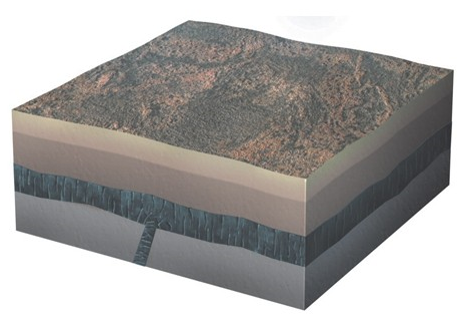The phase changes water and other substances undergo are based on
A) diabatic forces acting on the molecules.
B) gravitational energy stored within the electron orbitals of atoms.
C) nuclear fusion processes between atoms of a substance.
D) nuclear fission processes between atoms of a substance.
E) the amount of motion of molecules and the strength of the bonds between them.
E
Environmental & Atmospheric Sciences
You might also like to view...
The igneous feature shown in this figure is a

A) dike.
B) sill.
C) volcanic neck.
D) laccolith.
Environmental & Atmospheric Sciences
The size of particles that are usually the first to be set in motion by wind is(are):
a. silt. b. clay. c. sand. d. pebbles. e. boulders
Environmental & Atmospheric Sciences
How do scientists map the water table?
What will be an ideal response?
Environmental & Atmospheric Sciences
Potential energy is ________ energy.
A. Stored B. Electrical C. Heat D. Latent E. Motion
Environmental & Atmospheric Sciences